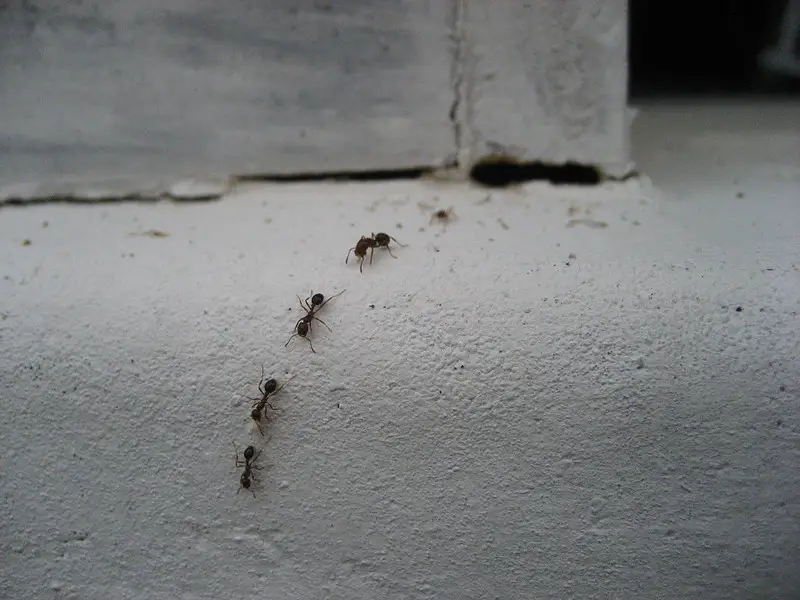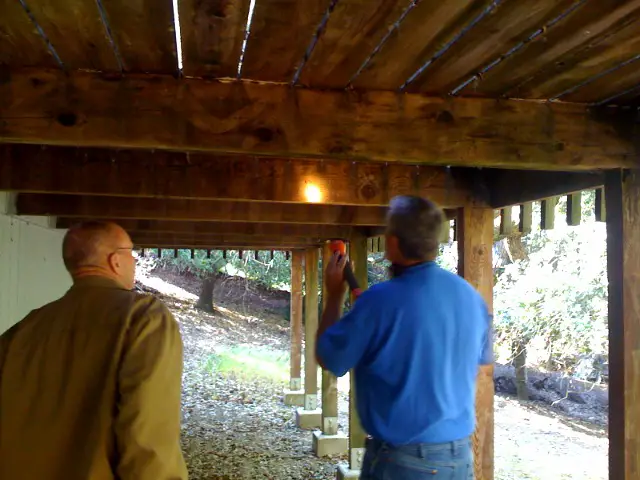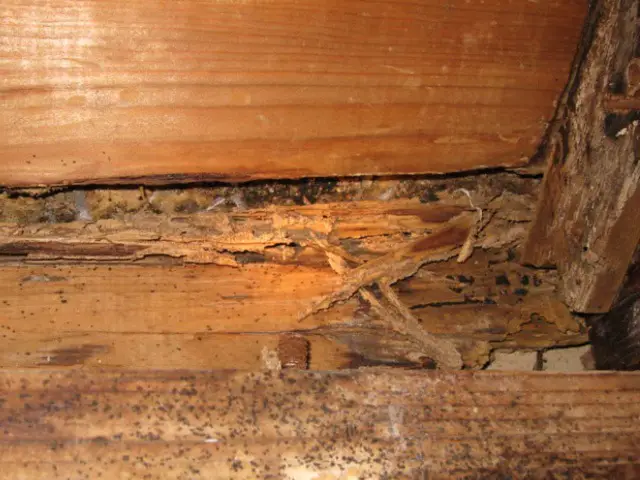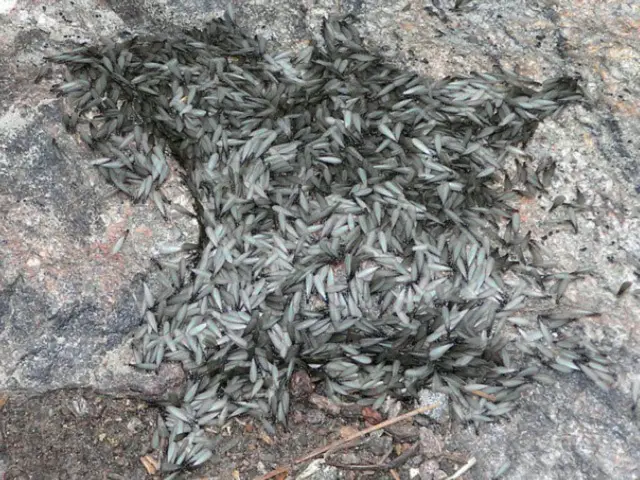What are the different types of ants?
The relation of ants to aphids is most interesting. It does not exist with all species of ants, but in at least a large number, honeydew is an important part of their diet, and in some cases, it may be their only food. There is evidence that the benefit is mutual, the ants protecting the aphids, driving away from the enemies of these insects or carrying the aphids to protected places. Ants that care for root-feeding aphids keep them in clambers or galleries, conduct them to their sources of food supply, collect and store their eggs for the winter and in spring, take the young to their food.
The corn root aphid so injurious to corn, as already described, is thus cared for by ants. Scale insects that produce honeydew are also cared for in a sense, for ants are very attentive to them and, to quite an extent, prevent the attacks of the enemies of the scales by their presence and activities. Thus in an indirect way, the protection by ants of aphids, scale insects, whiteflies, leafhoppers and in fact, any insects which produce honeydew establishes such ants as injurious.
Some kinds of ants have the most remarkable habits worthy of a brief reference here. Some species may make raids on the nests of other kinds and carry off their worker larvae and pupae to their own nests, where many probably serve as food, but a few may be reared and become slaves. Slavery is not essential with all kinds of ants where it is known, colonies having no slaves being able to carry on their lives unaided by slaves. With certain species, however, the situation is different.
In these, the workers have mandibles so constructed that they are unable to gather food, excavate their nests or care for the young. Accordingly, they make forays on the nests of other species, bringing back larvae and pupae, which on becoming an adult are slaves who do the work of the colony and care for their captors, both as adults and during their early stages.
Related posts:
- How To Get Rid Of Ants in California?
- How To Get Rid Of Ants in Texas?
- Termites in Florida
- Do Sugar Ants Bite?
How to identify types of ants?
Superfamily Formicoidea
These familiar and plentiful insects occur from the frigid regions to the Equator, being present in abundance practically everywhere, and it has been claimed that there are more individuals of ants than of all other terrestrial animals. They live in colonies that are quite permanent, enduring for many years in some cases, and the life of an individual and may continue for several years.
Ants are nearly always easily recognized by the presence of a petiole that is enlarged near or behind its middle, either being swollen or having a portion projecting upward there, followed behind by a constriction where this segment joins the rest of the abdomen. In some ants, the following segment is also more or less similarly shaped. According to the number of segments concerned, this gives these insects a rather elongate, narrow portion between the thoracic and abdominal masses, enlarged at one or two places.
Three classes of ants always compose a colony of workers, males, and queens or females. There may be subdivisions of members of the ant colony in some cases. The females and males usually have wings during a portion of their lives, these having a simple arrangement of the veins; the workers are wingless, though some have vestiges of these structures. The queens and workers are provided with a well-developed sting in some groups of ants, while ill others it is vestigial or entirely absent. The usual colors of ants are yellow, brown, black, red, dull red or brownish-yellow.
Colonies of ants occur in many kinds of locations. Some are in the ground, and these may be of different types of structure; some occur in the cavities of plants, either preformed or else tunneled out by the ants; some form nests on branches, malting them of various materials; and some nest in timbers or other unusual places; while a few kinds have no fixed homes.
The food of ants is as varied as are their nest locations. Probably the original food of the group was insects, either dead or helpless, and many species feed on this material. Others take the honeydew supplied by scale insects, leafhoppers and particularly by plant lice. Some raid the nests of other species of ants and feed on their larvae and pupae. Plant seeds, bulbs and the bark on tender roots also form the food of some ants, and one tribe raises a fungus in order to feed upon its hyphae. Sweet materials, such as cake, candy, sugar and molasses in houses, often attract ants, which find in these substances satisfactory foods.
Ant colony
Colonies in the ground may vary from those having a single tiny entrance and a few tunnels and galleries below the surface to large anthills several yards in diameter and several feet high, with extensive galleries both above and below the general ground level. In these nests may be found a queen (frequently several); males, at least at times; and often many thousands of workers.
The queen or queens produce the eggs, which are carried away and cared for by the workers, who also feed the larvae, clean them, transfer them from one part of the nest to another, according to the temperature and other conditions they need, and finally aid them in escaping from their cocoons. They also feed the queen and do all the work of the colony. The eggs laid may develop into either males or females and workers, and the theory of Dzierzon given above for bees has been applied to ants also, though some evidence that unfertilized eggs may in certain cases produce workers tends to throw doubt on the applicability of this theory to ants.
Carpenter ants
Carpenter ants chew through wood, destroying wood structures. Having carpenter ants in your home is bad news. You need to get rid of carpenter ants with bait, to make sure they don’t destroy the wood inside your walls. Unlike termites, carpenter ants don’t actually eat the wood. They chew it up and spit it out, but the damage is done.
Fire ants
The imported fire ant is a pest in both urban and rural areas. These ants directly affect plants and crops, animals and people. Fire ants also cause indirect problems through their negative effects on the infrastructure and ecosystem. The damage done estimates in the United States go to billions of dollars annually. Hundreds of millions of dollars are spent on fire ant pest control annually.
Fire ants are originally from South America, where several fire ant species exist. It is believed that some fire ants species have reached the United States through ship ballast. Both the black imported fire ant and the red imported fire ant exist in the U.S.
Argentina ant
The Argentine ant (Iridomyrmex humilis Mayr.) is a native of South America which probably reached this country between 1880 and 1890 at New Orleans and now is present nearly everywhere in the United States south of Virginia, Kentucky and Missouri and is also in California as far north as San Francisco.
The adults are brown in color. The queens are about a quarter of an inch long, the males about half that length and the workers about a tenth of an inch long. Their summer nests may be located anywhere – under sidewalks, under the sills of houses, in brick piles, stone piles, under a piece of board or a piece of tin, in an old tin can – in fact, in any place convenient to the food supply.
In the winter months, there is a tendency to concentrate into larger colonies, and they seek warm, dry, secure nesting places in which to hibernate. Egg production is probably quite large – perhaps 50 or more per day under favorable conditions – and an average of 40 days in warm weather is required for development from laying an egg to the emergence of the adult worker.
This is one of the worst of house pests known in the regions where it is abundant. Its small size enables it to enter through the smallest cracks, and it goes everywhere in houses after its food. It will eat practically everything in the way of raw and cooked foods, and no part of a house is free from its presence. The cold of ice chests does not repel them, and beds are not entirely protected by placing the bedposts in dishes of water, as after a few hours, a film of dust forms on the surface of this, over which with their light bodies they are sometimes able to pass. Though they do not sting, they bite freely and are able to cause some pain in this way. People asleep have been found with ants in the nose, ears and mouth. They visit aphids, soft scales and other insects for honeydew and, to some extent at least, their presence is favorable to these pests and makes their control more difficult.
White ants
White ants is a commonly used name for termites.
Red ants
House ants – These are of several kinds, but the one most usually troublesome is the little red ant or Pharaoh ant (Monomorium pharaonis L.), probably a native of Europe but now abundant in nearly all countries. It is very small, red in color, and makes its nests in walls, floors, sills or other timbers, whence it explores all parts of the houses, paying particular attention to those places where food is found.
Oftentimes regular lines of these pests may be found marching from some article of food they have discovered to their nest, with another line beside the just, on their way to obtain food. In such cases, it is sometimes easy to trace their line of march back to where they enter some timber in which their nest is placed.
Honey ant
The honey ants, so called, include these species in which the crop is capable of great distention, and this power is made use of by collecting honeydew and storing it until the abdominal mass is enormously distended and (in some species) about the size of a large currant, such individuals becoming animated food reservoirs. These members of the colony hang on the ceilings of their galleries, withdrawing from the regular duties of the other workers. The reason for the existence of such a peculiar habit is suggested by the fact that the honey ants are confined to dry plains and desert regions, being found in North America, South Africa and Australia. Therefore, they are probably true reservoirs of nourishment that may be drawn upon during periods of drought, when the ants must remain for some considerable time in their nests.
Queen ant
At certain seasons of the year, swarming occurs. At such a time, enormous numbers of winged males and females, previously produced in the nest, leave it and take flight. Mating occurs in the air, and the females soon return to the ground where they remove their now useless wings, either by pulling them off with their legs or jaws or by rubbing them against the ground, stones or grass stems. The queen now prepares a nest by digging a hole in the ground, in rotten wood or elsewhere, forming a small chamber at the inner end and closing the entrance.
At certain seasons of the year, swarming occurs. At such a time, enormous numbers of winged males and females, previously produced in the nest, leave it and take flight. Mating occurs in the air, and the females soon return to the ground where they remove their now useless wings, either by pulling them off with their legs or jaws or by rubbing them against the ground, stones or grass stems. The queen now prepares a nest by digging a hole in the ground, in rotten wood or elsewhere, forming a small chamber at the inner end and closing the entrance.
In her cloistered seclusion, the queen now passes days, weeks, or several months. This time is spent waiting for the eggs to mature in the queen’s ovaries. When these eggs have reached their full volume at the expense of her fat body and degenerating wing muscles, they are laid after having been fertilized with a few of the many thousand spermatozoa stored up in the spermatheca during the nuptial flight. The queen nurses the eggs in a little packet till they hatch as minute larvae. These she feeds with a salivary secretion derived by metabolism from the same source as the eggs, namely, from her fat body and wing muscles. The larvae grow slowly, pupate prematurely and hatch as extremely tiny but otherwise normal workers. In some ant species, it takes a full ten months to bring such a brood of minim workers to maturity. During all this time, the queen takes no nourishment but merely draws on her reserve tissues.
As soon as the workers mature, they break through the soil, thereby making art entrance to the nest and communicating with the outside world. They enlarge the original chamber and continue the excavation in the form of galleries. They go forth in search of food and share it with their exhausted mother, who now exhibits a further and final change in her behavior. She becomes so exceedingly timid and sensitive to light that she hastens to conceal herself on the slightest disturbance to the nest. She soon becomes utterly indifferent to her progeny, leaving them entirely to the care of the workers, while she limits her activities to laying eggs and imbibing liquid food from the tongues of her attendants. This copious nourishment restores her depleted fat body, but her disappearing wing muscles have left her thoracic cavity hollow and filled with air which causes her to float when placed in water. With this circumscribed activity, she lives on, sometimes to an age of 15 years, as a mere egg-laying machine (Wheeler).
Of course, there are many fatalities in such a history as this. Birds, dryness in their burrows, excessive moisture or cold, underground insects attacking them all destroy the great majority of these ants just starting new colonies. Then, too, the amount of nourishment stored in the individual is an important factor, some species having so little that they are wholly unable to start new colonies. An individual of such a species, therefore, either joins a colony already established, a queerness colony of a related species if she can induce the colony to accept her, or enters a colony of a very different species and, killing its members), raises their young until they emerge when they will accept her as their queen. Rarely two queens may start a colony together.
After the colony is well underway, the queen limits her duties to egglaying and may live many years. In one case, a queen lived nearly 15 years in confinement and may have been older! This is the greatest age known to have been attained by any adult insect. The males die soon after mating.
How to get rid of ants?
It seems like ants are always around the house even though they were never invited. Ants are everywhere. They are inside your home. Ants are in your yard or garden. And if ants are somewhere now, your can rest assured they’ll be there soon.
Ants aren’t really dangerous like other pests, but they’re considered by some the #1 nuisance pest in the U.S. Although there are about 700 types of ants in the United States, most are harmless to humans. However, just because ants may not be dangerous, it doesn’t mean that they aren’t harmful. Ants can destroy property like no other pest.
Due to the damage and inconvenience ants cause are a constant source of concern, frustration, and disgust for American homeowners.
Although ants are generally not dangerous to people, they can pose health risks. One of the biggest dangers of ants is food contamination.
For most people, the goal is to reduce the potential for an ant infestation. However, there are several measures you can take to reduce the risk of an ant infestation in your home:
Eliminate standing water and moisture near your home. Start by repairing leaking, drain lines, hose bibs, pipes and other water sources. Even an air conditioner condensate line can serve as a water source for ants.
Cut back all plants, including tree branches, from your house. Tree branches can serve as an easy highway for ants into your house.
Keep an eye out for an ant infestation. If you see signs of ants, it’s time to get rid of ants immediately. The best approach to ants in the house is to eliminate them quickly.
If you can identify the types of ants in your house, you’ll be better prepared to get rid of these pests. Unfortunately, this could be difficult for someone without the proper training on ants. Therefore, you should contact a pest control professional to help you get rid of ants now.




